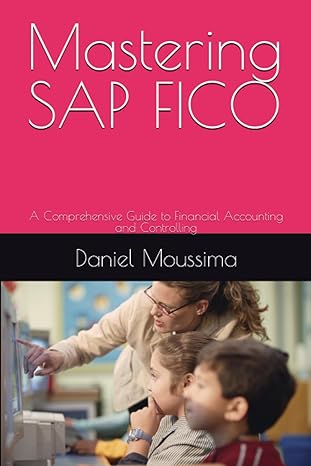Question
1. Where auditors have knowledge of specific intended users and uses, their judgement of what they consider material: a. remains unchanged. b. none of the
1. Where auditors have knowledge of specific intended users and uses, their judgement of what they consider material:
a. remains unchanged.
b. none of the choices.
c.is based on the last audit.
d. may be affected.
Each key control that the auditor intends to rely on must be supported by sufficient:
a.analytical review procedures.
b.tests of controls.
5. Which of the following business functions is mainly related to the bad debts expense account?
a. granting credit
b. all choices are correct
c. allowing for bad and doubtful debts
d.billing customers
7. The deviation rate the auditor will permit in the population and still be willing to use the assessed level of control risk established during planning is called the:
a. tolerable deviation rate (TDR).
b. acceptable risk of overreliance (ARO).
c. estimated population deviation rate.
d. sample deviation rate (SDR).
8. Sampling risk (sampling error) is an inherent part of sampling which results from:
a. weaknesses in client's internal control system.
b. failure to recognise exceptions.
c. inappropriate audit procedures.
d. testing less than the entire population.
9. To ensure that the audit meets the public accounting firm's standard of performance:
a. the working papers are reviewed by another member of the audit firm.
b. financial disclosure checklist is used for every engagement.
c. an audit engagement checklist is completed.
d. it is common to gather more evidence than is actually necessary.
10Which of the following is NOT required to be communicated to the audit committee or similarly designed body under ASA 260?
a. difficulties encountered in performing the audit, such as lack of availability of client personnel and failure to provide necessary information
b. the auditor's responsibilities under generally accepted auditing standards, including responsibility for evaluating internal control and the concept of reasonable rather than absolute assurance
c. disagreements with management about the scope of the audit, applicability of accounting principles, or wording of the audit report
d. all material irregularities and illegal acts of a material nature
c. reperformance procedures.
d. tests of transactions
Step by Step Solution
There are 3 Steps involved in it
Step: 1

Get Instant Access to Expert-Tailored Solutions
See step-by-step solutions with expert insights and AI powered tools for academic success
Step: 2

Step: 3

Ace Your Homework with AI
Get the answers you need in no time with our AI-driven, step-by-step assistance
Get Started


